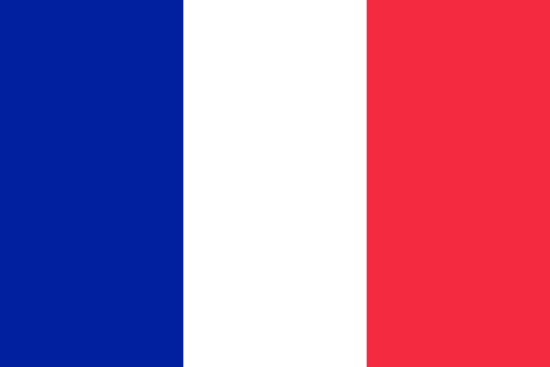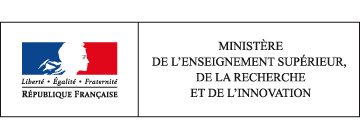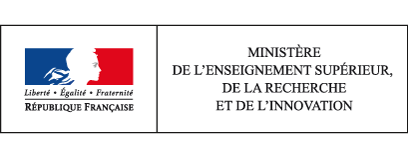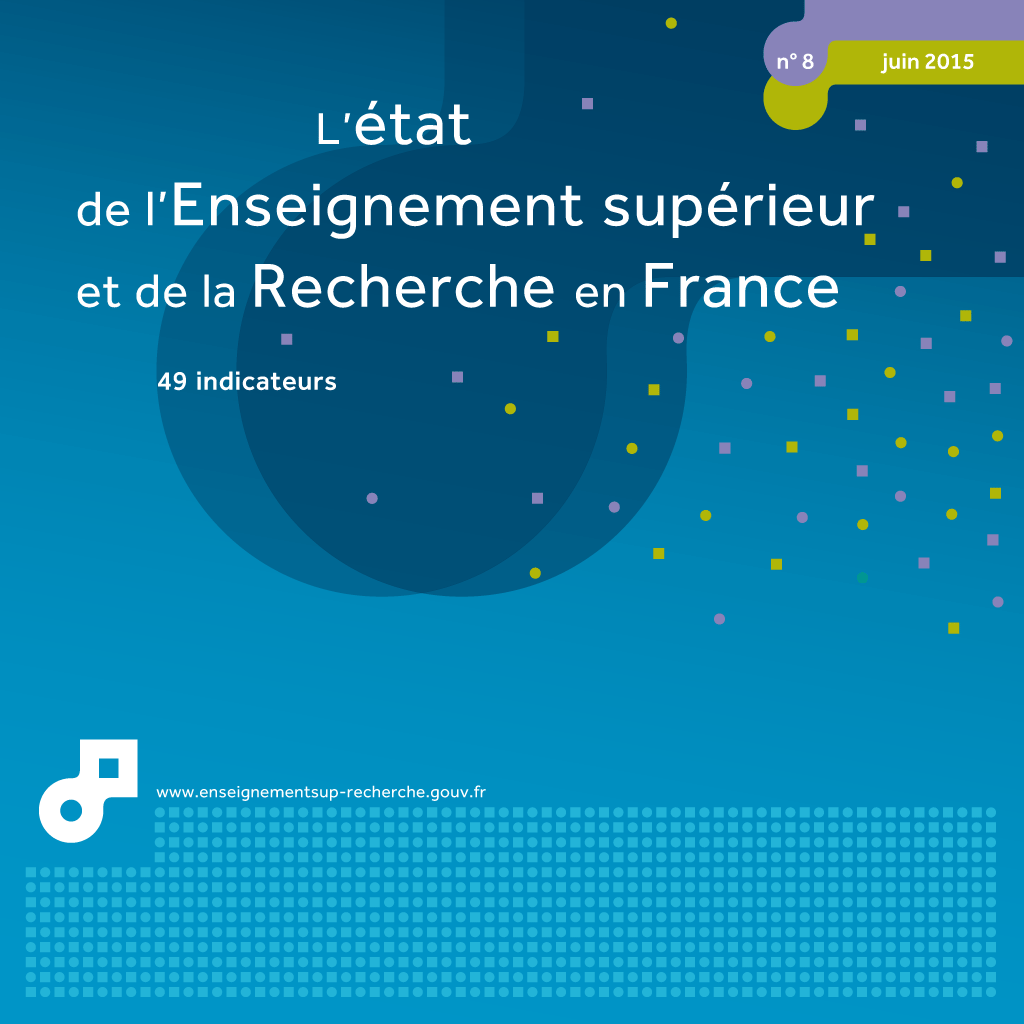01 education expenditure on tertiary education
This page has been updated. Read 01. education expenditure on tertiary education in Higher education & research in France, facts and figures 10th edition - June 2017
The nation spent €28.7 billion (€bn) on tertiary education in 2013. This is 2.5 times more than in 1980 (in constant euros). The contribution by central government represented 70% of that amount. In 2013, average expenditure per student stood at €11,540, or 40% more than in 1980 (in constant euros).
In 2013, the nation (central government, local authorities, other public administrative bodies, households and companies) dedicated €28.7 billion to tertiary education, an increase of 1.2% over 2012 (at constant prices). Since 1980, expenditure on tertiary education has seen strong growth of 2.8% per year on average. Its share of domestic education expenditure (DEE) increased from 15.0% in 1980 to 19.8% in 2013 (table 01.01).
Over the period as a whole, DEE on tertiary education was multiplied by 2.5 in constant euros (chart 01.02). Despite this significant increase, average expenditure per student rose by only 40.1% due to a doubling of student numbers. Over the same period, average expenditure per secondary school pupil increased by 63.1%. Over the period 2006-2010, when there was both a rapid increase in DEE and a slowdown in student enrolment, expenditure per student increased by 2.5% on average per year. Since 2010, however, the slowdown in DEE combined with a rise in student numbers has resulted in a drop in spending per student of 0.9% annually. 1
Average expenditure per student stood at €11,540 in 2013 (chart 01.03). Although it may be difficult to compare the cost of different curricula directly, especially since research expenditure is included in the university totals, there are considerable differences from one branch of study to another. The cost varies from €10,850 per year for a university student to €14,850 for a pupil in a class preparing for admission to Grandes Ecoles (Classe préparatoire aux grandes écoles - CPGE). However, in recent years, the gap between these average expenditure figures has tended to narrow (chart 01.03).
Seventy per cent of total expenditure goes on staff, especially teachers' wages (40%) (chart 01.04). 2
The theoretical cost of 18 years of education, with no repeat years, leading to a Bachelor's degree (via a general or technology second cycle) was estimated in 2013 to be €147,900, while a 17-year education leading to an Advanced technician diploma (Brevet de technicien supérieur - BTS) (via a vocational upper secondary cycle) would cost the nation €145,800.
In terms of initial funding (see definitions opposite), central government contributes the major share of DEE for tertiary education (70.4%), while local authorities contribute 10.5% and households 8.7% (table 01.01). In terms of final funding, i.e. after including grants in the household budget, the household share practically doubles (16.6%). Some direct or indirect support, funded by the central government and which benefit students or their families, do not appear in the DEE for tertiary education: these are related to taxation (increase in family quotient) or are not directly linked to student status (social housing benefit). If they were included (excluding social welfare payments), expenditure per student in 2013 would then increase from €11,540 to €12,760.
Jean-Pierre Dalous & Martine Jeljoul
1 Change in expenditure on programmes 150, 231 and 142 of the Inter-ministerial Mission for Research and Higher Education (Mission interministérielle recherche et enseignement supérieur - MIRES) was -0.2% between 2010 and 2011, +1% between 2011 and 2012 and +0.9% between 2012 and 2013 (at 2013 prices).
2 In the 2012 definitive accounts and the 2013 provisional accounts, a distinction is made between staff working in research and staff involved in teaching.
How to cite this paper :
close
Key figures
Whole of France
Whole of France
Whole of France
Whole of France
Whole of France
Whole of France
Whole of France
Whole of France
Whole of France
Whole of France
Whole of France
01.01 Expenditure on higher education
1 These series have been backcasted for the whole period (see methodology opposite).
2 This includes Social housing benefit (Allocation de logement à caractère social - ALS), the State contribution to Individualised rent subsidy (Aide personnalisée au logement - APL), increase in family quotient, tax reduction for tuition fees.
3 The structure of initial funding for higher education could not be backcasted before 2006.
4 Including the French national research agency (Agence nationale de la recherche - ANR) and the consular chambers (chambers of commerce and industry, chambers of trade, chambers of agriculture, etc.).
p provisional.
You can embed this table to your website or your blog by copying the HTML code and pasting it into the source code of your website / blog:
close
01.02 Comparison of trends in DEE, average expenditure and staff numbers in higher education (index base 100 in 1980, 2013 prices)
Series are backcasted to take into account changes in methodology (see methodology opposite).
p provisional.
You can embed this chart to your website or your blog by copying the HTML code and pasting it into the source code of your website / blog:
close
01.03 Trend in average expenditure per student at 2013 prices (1980-2013)
Series are backcasted to take into account changes in methodology. They therefore differ from those given in previous editions of Higher Education and Research in France, Facts and Figures (see methodology opposite).
p provisional.
You can embed this chart to your website or your blog by copying the HTML code and pasting it into the source code of your website / blog:
close
01.04 Nature of expenditure on higher education in 2013 p
p provisional.
You can embed this chart to your website or your blog by copying the HTML code and pasting it into the source code of your website / blog:
close
Related statistical publications
 Note d'information DEPP 14.37 - Le coût de l'éducation en 2013 - Jean-Pierre Dalous, Martine Jeljoul - November 2014
Note d'information DEPP 14.37 - Le coût de l'éducation en 2013 - Jean-Pierre Dalous, Martine Jeljoul - November 2014 En 2013, la dépense moyenne pour un élève ou un étudiant est de 8 320 euros. Elle s’élève avec le niveau, allant de 6 220 euros pour un écolier à 11 540 euros pour un étudiant. Depuis 2010, seul le coût d’un élève du premier degré poursuit sa tendance à la hausse tandis que celui des autres niveaux est en recul.

 Etat de l'École 24 - État de l’École - Catherine Moisan (dir.), Paul Esquieu (ed.), collective workSandra AndreuChristophe BarretBenjamin BeaumontLinda Ben AliAnaïs BretAgnès BrizardÉric Chan-Pang-FongSophie CristofoliJean-Pierre DalousAurélie DemongeotFrancine DupouyYann EtèveSylvie FumelÉmilie GarciaChristèle GauthierPierre HallierStéphane HerreroMarie-Laurence JasparMartine JeljoulRoselyne KerjosseSaskia KeskpaikIsabelle MarionHélène MichaudonFabrice MuratSylvaine PéanJacqueline Perrin-HaynesPascale Poulet-CoulibandoDanielle ProuteauIsabelle RecotilletThierry RocherLéa RousselSophie RuizFranck SallesAlexia StéfanouFanny ThomasRonan Vourc'h - October 2014
Etat de l'École 24 - État de l’École - Catherine Moisan (dir.), Paul Esquieu (ed.), collective workSandra AndreuChristophe BarretBenjamin BeaumontLinda Ben AliAnaïs BretAgnès BrizardÉric Chan-Pang-FongSophie CristofoliJean-Pierre DalousAurélie DemongeotFrancine DupouyYann EtèveSylvie FumelÉmilie GarciaChristèle GauthierPierre HallierStéphane HerreroMarie-Laurence JasparMartine JeljoulRoselyne KerjosseSaskia KeskpaikIsabelle MarionHélène MichaudonFabrice MuratSylvaine PéanJacqueline Perrin-HaynesPascale Poulet-CoulibandoDanielle ProuteauIsabelle RecotilletThierry RocherLéa RousselSophie RuizFranck SallesAlexia StéfanouFanny ThomasRonan Vourc'h - October 2014 
 Géographie de l'École 10 - Géographie de l'école - Catherine Moisan (dir.), Olivier Monso (ed.), Catherine Naviaux (ed.), collective workCédric AfsaGérard BoudesseulPierrette BriantAgnès BrizardPatrice CaroÉric Chan-Pang-FongGhislaine CormierJean-Pierre DalousLaurence DauphinAurélie DemongeotPatricia GanemPierre-Olivier GasqYvette GreletPascale GuilloisSolène HilaryCaroline IannoneMarie-Laurence JasparMartine JeljoulRoselyne KerjosseCécile LafargueSylvie Le LaidierStéphanie LemerleAlexandra LouvetOlivier MonsoFabrice MuratSylvaine PéanJacqueline Perrin-HaynesSabrina PerronnetPatricia ProuchandyDanielle ProuteauJuliette RobinSophie RuizXavier SorbeAlexia StéfanouMichèle Thaurel-RichardFanny ThomasBruno TrosseilleCéline ViventRonan Vourc'h - June 2014
Géographie de l'École 10 - Géographie de l'école - Catherine Moisan (dir.), Olivier Monso (ed.), Catherine Naviaux (ed.), collective workCédric AfsaGérard BoudesseulPierrette BriantAgnès BrizardPatrice CaroÉric Chan-Pang-FongGhislaine CormierJean-Pierre DalousLaurence DauphinAurélie DemongeotPatricia GanemPierre-Olivier GasqYvette GreletPascale GuilloisSolène HilaryCaroline IannoneMarie-Laurence JasparMartine JeljoulRoselyne KerjosseCécile LafargueSylvie Le LaidierStéphanie LemerleAlexandra LouvetOlivier MonsoFabrice MuratSylvaine PéanJacqueline Perrin-HaynesSabrina PerronnetPatricia ProuchandyDanielle ProuteauJuliette RobinSophie RuizXavier SorbeAlexia StéfanouMichèle Thaurel-RichardFanny ThomasBruno TrosseilleCéline ViventRonan Vourc'h - June 2014 
 Les dossiers 199 - Le Compte de l'éducation : principes, méthodes et résultats pour les années 1999 à 2009 - Michel Quéré, Luc Brière, Jean-Pierre Dalous, Martine Jeljoul - May 2011
Les dossiers 199 - Le Compte de l'éducation : principes, méthodes et résultats pour les années 1999 à 2009 - Michel Quéré, Luc Brière, Jean-Pierre Dalous, Martine Jeljoul - May 2011 Translation
 Etat de l'enseignement supérieur et de la rechercheL'état de l'Enseignement supérieur et de la Recherche en France n°8 - juin 2015
Etat de l'enseignement supérieur et de la rechercheL'état de l'Enseignement supérieur et de la Recherche en France n°8 - juin 201501 - la dépense d’éducation pour l’enseignement supérieur - Jean-Pierre Dalous & Martine Jeljoul






